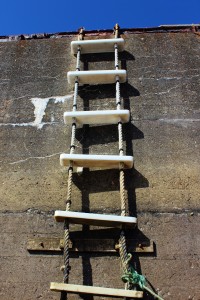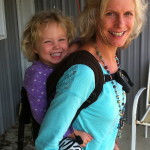 Every parent is challenged by anger. Many are totally surprised at their own capacity for anger towards the children they love more than life. Many are surprised by their child’s emerging anger when (not if) they begin to exert their personhood. The perfectly behaved one-year old seems angelic. Then one day, out of the blue, you see a glimpse of anger. What is a parent to do?
Every parent is challenged by anger. Many are totally surprised at their own capacity for anger towards the children they love more than life. Many are surprised by their child’s emerging anger when (not if) they begin to exert their personhood. The perfectly behaved one-year old seems angelic. Then one day, out of the blue, you see a glimpse of anger. What is a parent to do?
I certainly don’t have all the answers. For one thing I don’t know you or your child so I wouldn’t begin to give you advice or instructions. Handling anger is not really as simple as one, two, three….
But we all need to spend some time thinking about anger. Whether we are being intentional or not, we are teaching our children about anger. Our primary method of teaching is how we model our own anger in front of them. What do we do when they do something that brings out anger in our hearts? How do we respond when life situations make us angry? Or what do we do when we face repeated frustration?
Some of us had great parents who modeled a healthy way of dealing with anger. Many of us were told that it was unacceptable to be angry and that when we felt anger, we were wrong. This approach to anger forced us to learn to ignore or stuff anger. Now as adults we may stuff, store, store, store, then BLOW! Have you ever experienced or witnessed a volcanic eruption of anger? Where did it come from it? Sometimes an angry response seems totally out of proportion with the provocation, giving a clue that there were many pent-up co-factors behind the eruption of anger.
 Dr Ross Campbell has written many helpful parenting books. In How to Really Love Your Teen, he has a chapter in which he describes “The Anger Ladder.” This is a powerful illustration that gave me a lot of insight in parenting five children. Many parents I have shared it with over the years have found it beneficial.
Dr Ross Campbell has written many helpful parenting books. In How to Really Love Your Teen, he has a chapter in which he describes “The Anger Ladder.” This is a powerful illustration that gave me a lot of insight in parenting five children. Many parents I have shared it with over the years have found it beneficial.
Dr Campbell describes rungs of the Anger Ladder with the bottom rung being the lowest level of dealing with anger, and each successive step up the ladder represents growth. This visual picture helps you to understand that progress and improvement in handling anger is possible. It also gives a clear guide and step by step goals to help our children (and often ourselves) reach maturity in handling anger.
1. The absolute bottom rung of the ladder is stuffing. Stuffing happens when anger is not acknowledged or dealt with, but it is stuffed internally. This method of dealing with anger comes at a great personal cost. The negative emotions we feel, but do not have the freedom to express, end up being turned on ourselves. Bottling up anger over many years can lead to serious illnesses, such as cancer, auto-immune disorders, depression, and other chronic conditions. It’s as if the body has to attack something when angry, so by forcing ourselves to stuff anger, we end up attacking ourselves.
2. The next level is passive aggressive behavior. It is not always intentionally thought out, but if you know someone who deals with anger in this way, there always seem to be little things that happen which seem attacking – just not directly. A person who is operating with passive aggressive behavior is not always aware of their need and desire to “get back” at the person they are angry with in this subtle form. It can be a serious challenge to recognize and deal with this sort of learned behavior. Sometimes passive aggressive behavior is very difficult to spot in the mirror. It involves having an overall negative attitude or reaction to someone without addressing the specific issue that has provoked a negative reaction.
3. The next level of anger is undifferentiated physical abuse to anything and anyone nearby. While this is not a great way to manifest anger, it is an improvement on step 1 or 2! If this is where your toddler or child is at, don’t try to stifle it! That would be working backwards. Rather, try to help your child understand their rage and seek to move them UP the ladder, perhaps one rung at a time. Sometimes, as parents, we want them to jump right to the top rung with perfect control of themselves while addressing the issue that is bothering them. How many adults do you know who manage anger that well? How often do you manage it? Lowering our expectations of our children will allow them to learn to deal with their anger in a more healthy way. It takes patience and wisdom.
4. Level four is characterized by a physical attack on the object of the anger. This is never good. But the good thing to recognize is that even this demonstrates improvement and growth in handling anger. Instead of just a general overall feeling of anger, the anger is being targeted towards its object. As a parent, sometimes we may need to physically restrain our children by holding them, as we help them understand their emotions and guide them towards higher levels of managing anger.
Dr Campbell goes on to describe various other manifestations and levels of anger. You might rank them differently from him, or from me. The point is there is a progression:
5. emotionally destructive behavior;
6. verbal abuse;
7. destroying property;
8. throwing objects;
9. expressing unrelated complaints;
10. becoming angry at someone else who is a bystander instead of at the source of the anger;
11. cursing;
12. unpleasant and loud behavior;
13. thinking logically and constructively;
14. holding to the primary complaint, not to peripheral issues;
15. focusing anger on the source only;
16. seeking resolution to the conflict while maintaining respectful behavior.
So, if you or your child is angry and expressing the anger with unpleasant and loud behavior (12), you can reassure yourself that they have actually progressed quite high on the anger ladder. Yes, there is room for improvement, but recognizing the progress towards maturity can provide freedom to develop that maturity.
Anger can be extremely awkward. Everyone exposed to anger can be impacted. Children exposed to parental anger at a young age can be emotionally bruised and suffer damage.
God gave us all of our emotions. Anger is a way we have of protecting ourselves. God can also use our anger to accomplish great works through us when it is directed and controlled by His Spirit.
Parenting gives us the opportunity to learn to grow in maturity in how we handle anger, so that we can provide an example of the process of being angry in front of our children. Modelling mature behavior is by far the most powerful teaching device we have available. Additionally, we have the opportunity to help our children recognise their own feelings of anger and frustration, help them identify and understand the source, and explore the response options available to them. Understanding this process and committing to it will ensure that our children can grow in maturity in their ability to handle this powerful emotion.
If you discover that you might have been stuck on rung 1 or 2 of the anger ladder, you might want to work at discovering the sources of your anger using a method like EFT. If you’ve been trying to get your child’s anger to ‘go away,’ you might actually be inadvertently encouraging them to stuff anger in a very unhealthy way. It can be scary to help our children come to terms with their anger, but the lack of obvious outward anger is not always good for them in the long-term. A perfectly controlled child does not always mean all is well. God has given us ALL our emotions. Tuning in to the source of anger can give us insight into the passions God has put in our heart.
What has been your biggest challenge in training your children to express anger appropriately?
Next post… Anger Part 2
 Author: Becky Hastings, wife, mom to five, MIL of two, grandmother, passionate follower of Jesus, health promoter, breastfeeding counselor helping moms for 22+ years, and someone who seeks to understand interpersonal relationships!
Author: Becky Hastings, wife, mom to five, MIL of two, grandmother, passionate follower of Jesus, health promoter, breastfeeding counselor helping moms for 22+ years, and someone who seeks to understand interpersonal relationships!

Pingback: Anger Part 2 | Journey Boost